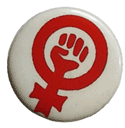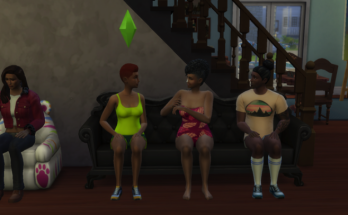In attempting to identify the essential components of an x-reality, democratic, feminist of color space for MALS 72700, I reflected on the findings of my initial evaluation of my chosen online space, okayplayer.com. In completing my online ethnography I discovered that users almost unanimously felt that the site lacked adequate feminist representation and voice, that (as with most other online forums) the site was susceptible to misogynist, biased posts by trolling users disrupting the flow of productive conversation, and that the traditional, forum style structure of the site left little room for constructive debate. Additionally, users found the moderation policies to be opaque and its aims inconsistent, the lack of a voting mechanism frustrating, and the velocity of responses nonconductive to meaningful conversation. As Yeon Ju Oh notes in the chapter “Is Your Space Safe? Cyberfeminist Movement for Space Online”, each of these features mirror the violence against women so predominant in offline communities: {a}lthough there is no restriction on visiting a place online unless it is barred…accessibility does not guarantee the right to move freely in communities. The constant assault from sexually harassing representations and utterances violates the right of women to be safe in cyberspace” (253). While okayplayer.com offers no explicit barriers to entry for feminists of color, the site’s features and structures prevent it from becoming a truly safe space for feminists. Indeed, due to the predominance of these structures across the internet, I feel that there is no opportunity to create a truly safe, democratic space for feminists of color online, and as a result shifted my focus towards the creation of such a space offline.
In addition to using the online ethnography of okayplayer.com to evaluate the features of the site that encouraged individuals to join the site, and to identify which essential components of the site are worthy of preservation in an offline attempt to create a democratic, feminist space. Many users ofokayplayer.com were nostalgic for an earlier iteration of the site, more limited in scale, centered on specific, geographically limited music cultures, and focused on the artist-fan interaction outside of the studio structure of PR formed talking points and studio sanctioned events. In the creation of my x-reality democratic space I aimed for the creation of a feminist knowledge playground centered on the music industry yet outside of the commercialization and commodification of fandom. In addition, I aimed to prevent my project from becoming a part of the politics of visibility as, “[w]ithin an economy of visibility, popular feminist expressions and practices are important for public knowledge, but when their visibility becomes their politics, and this visibility hails us, asks us to pay attention to its spectacular expression, it also distracts us from the structural costs of popular misogyny’s response, the aftermaths of this relationship, the violent effects of its rage” (Banet-Weiser, 145). I hoped to keep the focus on the structure of popular misogyny within the music industry and beyond, rather than simply visible expressions of feminist empowerment within popular culture.
In creating my space I attempted to achieve the aims of my x-reality, democratic, and feminist space by asking a group of my friends, through a Whatsapp group chat, to participate in the creation of such a space at a pre-existing event, a party that my partner and I were hosting before a charity event which we were all attending. In the days before the event I outlined the goals of my project and told them about the class and our readings asked those who were attending to bring a piece of music which they considered to be feminist or particularly empowering. In reflecting on the original aims of the site, I asked that my friends bring a physical copy of the music, whether a CD or an album, so as not to further perpetuate the monetization of fandom through the use of streaming services. I also felt that this would require participants to choose an entire musical project, rather than picking individual songs or crafting a feminist message through a playlist. I felt that each individual bringing a unique piece of music would lead to interesting discussion regarding what it means to be a feminist music fan, and feminist musician, and the state of the music industry at a whole.
In reflecting on the event, which took place this last Friday, I felt that overall the gathering was a success; there are several areas where the concept could be improved to achieve a truly democratic and feminist space. Interestingly enough, many of the challenges I encountered were the same obstacles I encountered online. The first issue I encountered was the rate of participation, with only around 30% of the roughly 20 attendees following up on their commitment to bring a piece of music. While I expected slippage in participation as the event approached, I felt that more robust participation from the attendees would have resulted in a more developed event. I feel that attaching the request to an already existing event exacerbated this problem, as attendees were not coming expressly to discuss feminism within the music industry or to create a democratic and feminist space. This led to my second obstacle, the Beyonce problem. While attendees brought music by bands like Slaeter-Kinney, Sonic Youth, Janelle Monae, Banjamin Clementine (the only male solo artist) and The Smiths, it seemed that half of those who did bring music arrived ready to talk about Beyonce, and those who arrived without music defaulted to a Beyonce project when asked. While the predominance of Beyonce’s work did lead to some interesting discussion regarding Beyonce’s work as a political project of feminism vs. one of feminist visibility, more variety would have led to a more varied conversation. Lastly, I encountered problems of moderation. I did not have any particular structure to the evening, and attempted to serve as variously the DJ for the music that people had brought with them, mater of ceremonies, and inquisitor, questioning them about the music once it was on. Ultimately this cycle was drowned out by other conversations at the event and devolved into a general gathering of my friends that had been the purpose of the event initially. Additionally, my continual bouncing between participants and tending to the music left less time for observation and note taking than I would have liked. More structure to the conversation and a more clearly defined purpose would have been to the benefit of creating a truly democratic and feminist space. Finally, there was a type of group moderation when one individual attempted to play Erykah Badu, and several individuals pointed out that she had problematic views on rape culture and it was decided that her music should not be included. This took moderation to the group level as I was unaware of her comments on this issue.
Ultimately, however, I felt that my project added a unique perspective and undercurrent to the event. Those of my friends who did participate were eager to share a piece of music which held personal significance for them, and to share that music with a group of their peers, and on reflecting at the conclusion of our time together they let me know that it was a fun experiment and brought a different energy to the event. Additionally, the variety of music and the stated theme caused various people to state that they felt more aware of their presence. Each attendee to the event considered themselves to be a feminist, and as a result everyone who shared their music was comfortable to do so, and to share their thoughts. The velocity and structure of a tangible, in-person conversation clearly lend themselves more directly to a free exchange of ideas, and everyone was able to share or observe, with little pressure or fear of judgment. Additionally, while scale and participation were ultimately an issue, the selectivity of the invite list and the familiarity of the participants with each other led to a free exchange of ideas and an overall feeling of comfort, fun, and solidarity. Ultimately, I felt the camaraderie, familiarity, and shared interests that had first drawn me online to okayplayer.com, and demonstrated the potential for x-reality feminist spaces.

